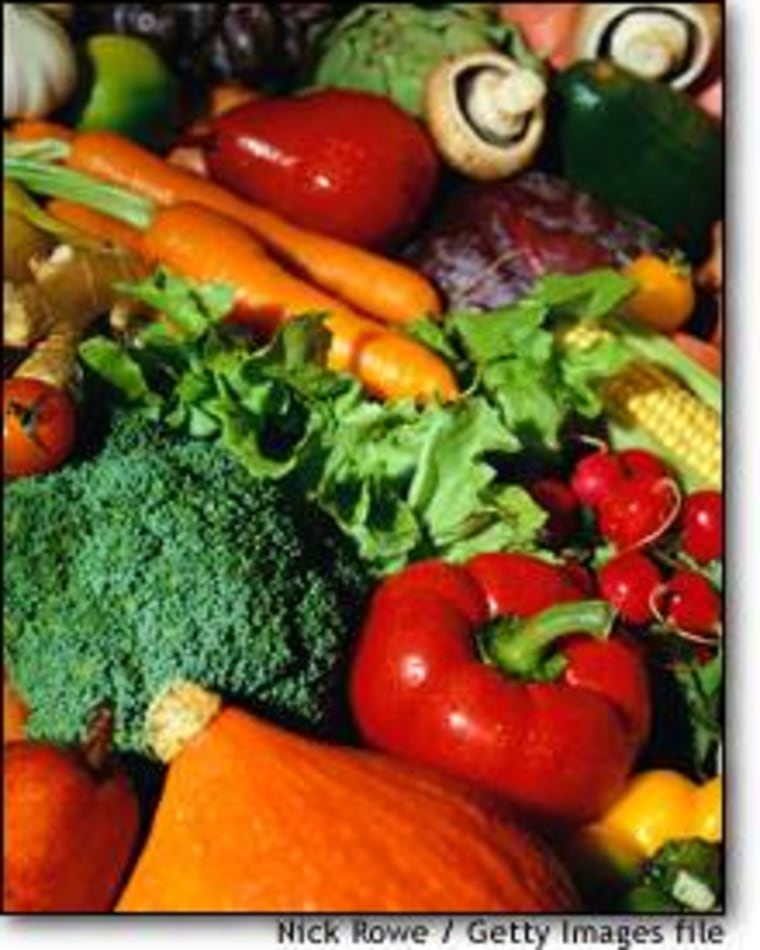Although only 2.5 percent of U.S. adults never eat meat, poultry or fish, that is still a considerable 4.8 million people. For all these people who eat vegetarian-style, the traditional USDA Food Guide Pyramid doesn’t indicate how to assure an adequate supply of certain nutrients that can be absent in the diet. A new food guide published in the Journal of the American Dietetic Association, however, illustrates how to go meatless nutritiously.
Old recommendations that plant sources of protein must be combined in certain proportions were disproved some time ago. A variety of protein sources throughout the day can add up to meet needs.
For children age eight and under and for adults, the new vegetarian food guide calls for five daily servings of protein-rich foods. Adolescents and teens should have six. These can be beans, nuts, seeds, tofu, other soyfoods, vegetarian meat substitutes (such as veggie burgers), eggs, or dairy products. Although five servings may seem like a lot, relatively small amounts, such as a half-cup of beans, a quarter-cup of nuts, or one egg, count as one serving.
Meeting calcium needs is a concern for everyone, but this is especially true for vegetarians who don’t eat dairy products. The new food guide’s group of “calcium-rich foods” includes protein-rich foods (such as cow’s milk products, soymilk and soynuts), as well as vegetables (broccoli), fruits (fortified fruit juice), and grains (calcium-fortified cereal). The guide recommends a number of servings based on a person’s age.
It is important to note that vegetables such as bok choy, kale and mustard greens count as calcium-rich foods, but not all dark greens do. Spinach, beet greens and Swiss chard are high in calcium, but their high levels of oxalate bind calcium and reduce its absorption.
However, even with calcium-rich greens, it takes a whole cooked cup of them to provide the calcium in a half-cup of milk. While these veggies may help meet calcium needs, most people will need other good calcium sources.
Don't skimp on vitamins
Tips for meal planning issued with the new food guide list vital additional recommendations, such as including at least three good sources of vitamin B-12 daily. Those who don’t consume enough dairy products, eggs, fortified soymilk, cereal, or nutritional yeast need a supplement.
Moreover, according to a new statement from the American Dietetic Association, people need soymilk, cereal fortified with vitamin D, or a supplement with D to preserve bone health, if they don’t have dairy products regularly or lack adequate sun exposure.
The food guide also highlights our need for healthy fats. Omega-3 fats, important for heart health and possibly cancer prevention, can be low in the diet without fish, eggs or sea vegetables. The guide calls for two servings daily of omega-3 sources, such as flaxseed or flaxseed oil, canola or soybean oil, or walnuts. Small amounts of olive and canola oils, mayonnaise, soft margarine, or the fat inherent in nuts, seeds and avocados provide other needed nutrients.
The new vegetarian food guide provides detailed guidance for people who want to plan healthy meatless meals and diets. The guide makes clear that a diet is not healthy because of what you leave out. On the contrary, a good diet comes from including all the foods you need to bolster good health.
